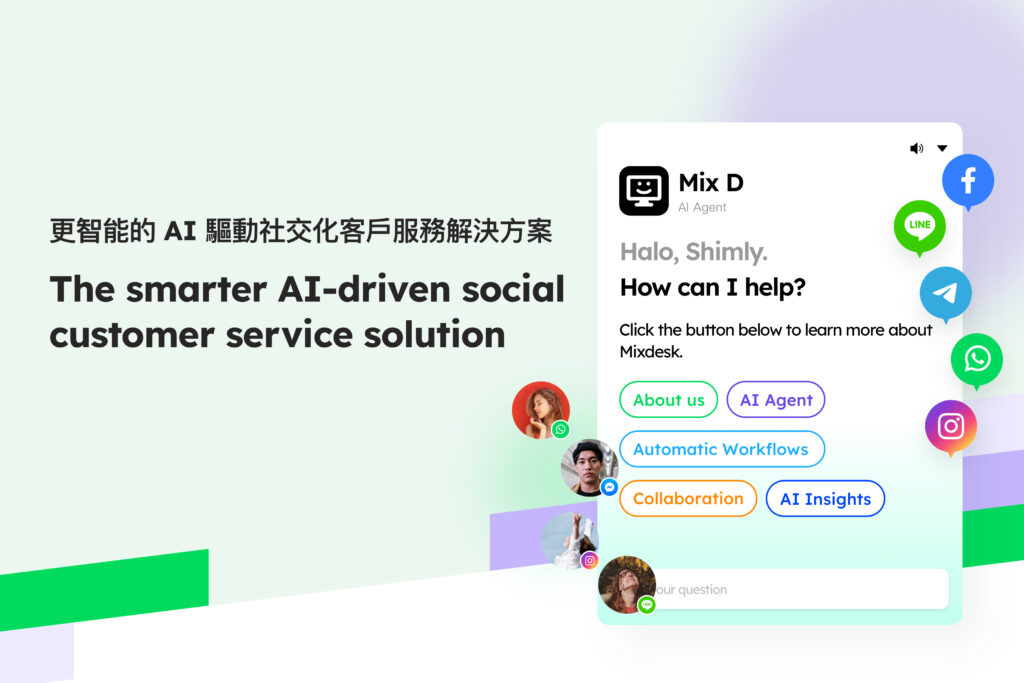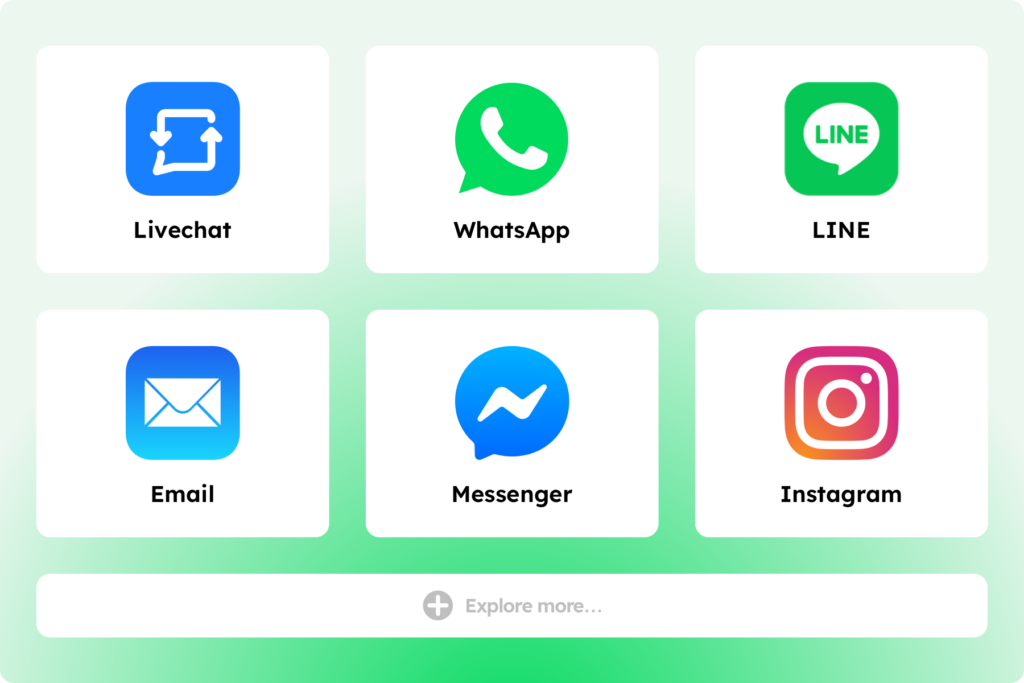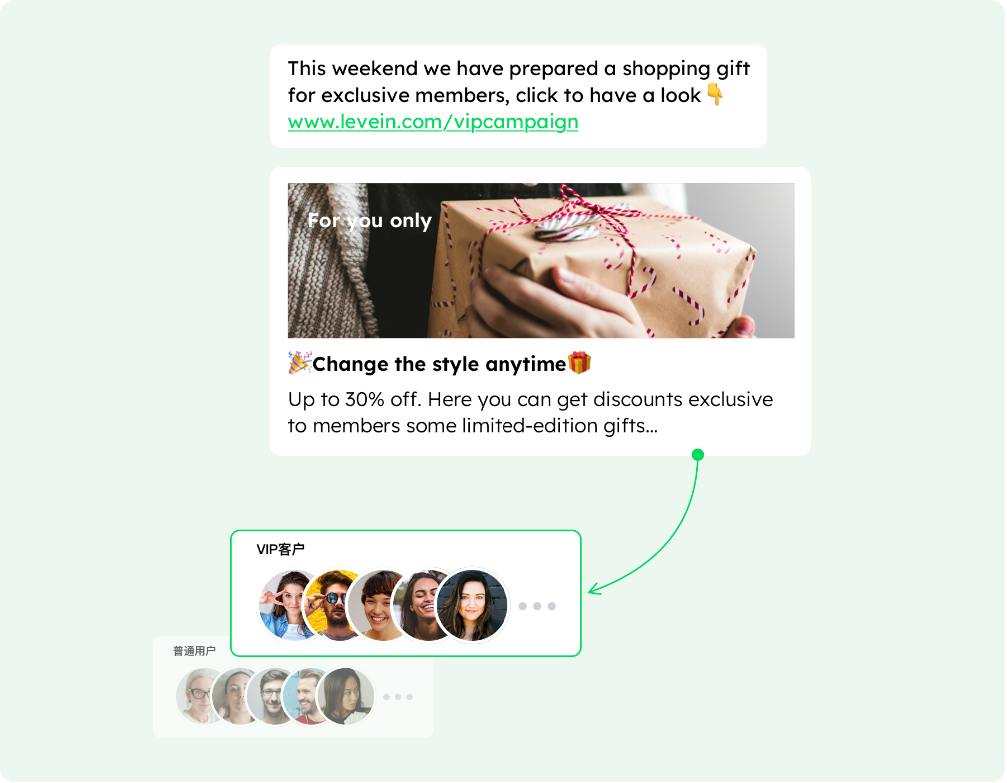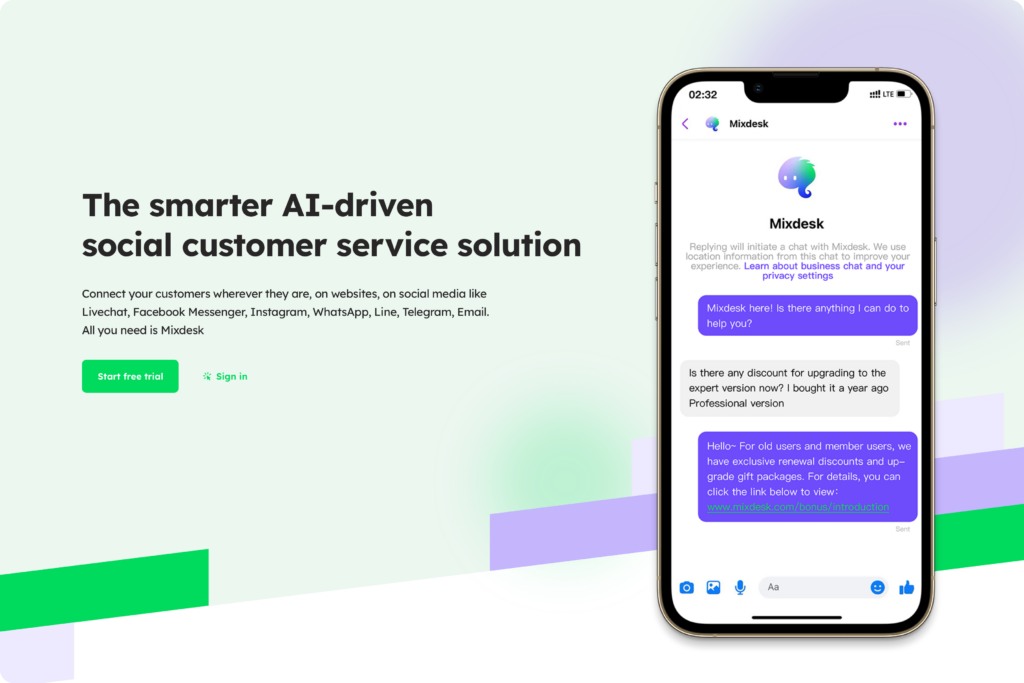Author of this article:Miya, Search engine optimization expert
In this era of ”screen swiping", social media is no longer only a space for people to communicate, but also a key battlefield for brands to seize the minds of users and create popularity.
By doing a good job of social media marketing, brands can stand out from the massive amount of information, continuously narrow the distance with users, and realize the transformation from attention to trust. Nowadays, how to leverage social media to create explosive content and accurately reach audiences has become an important issue for brand development.
Mixdesk
AI Agent

- Definition of Social media marketing
- What is a social media marketing service?
- Why is social media marketing important?
- Automated marketing of Social media: How to make it easy for brands to capture global users?
- How can social media marketing effectively promote your business?
- Social Media Marketing Strategy: A Comprehensive Guide
- How much does social media marketing cost?
- The importance of social media marketing management tools
Definition of Social media marketing
Social media marketing is the practice of promoting companies, enhancing brand influence and interacting with target audiences through social media networks. Generally, social media marketing involves posting attractive content, responding positively to comments, interactive mentions, and optimizing the performance of posts to drive brand awareness and user engagement.
What is a social media marketing service?
Social media marketing services are the use of platforms (such asWhatsApp、Facebook、Instagram、LINEEtc.) Professional services for building an image for the brand and promoting its culture, products and services. The core goal of most social media marketing services is to increase brand engagement, attract more followers, and promote the conversion of potential customers. In addition, such services usually include analyzing data, formulating strategies, optimizing advertising, and managing community interactions to achieve sustainable brand growth.

Why is social media marketing important?
The importance of social media marketing is reflected in its direct impact on user behavior and business development:
- High daily user activity:86% of users use social media at least once a day, So that brands can continuously deepen user impressions through frequent interactions.
- Influence purchase decisions:74% of consumers will learn about brands and products through social media before making a purchase decision, Which means that social media has become the main source of information for consumers.
- Effectively acquire potential customers:59% of marketingPeople said that social media is an important channel for them to acquire potential customers and drive sales. The active presence of a company on social media can help users complete the whole process from first acquaintance with the brand to purchase. People frequently use social media platforms to:
- Understand the brand: Social media provides users with a natural channel to understand the brand's culture, core values and industry professionalism.
- Research products and services: Users can browse posts, view comments and feedback, and gain an in-depth understanding of product quality and user experience.
- Participate in purchase and consultation: Social media has gradually become a convenient platform for consumers to directly inquire, place orders and interact.
If a brand lacks a presence on social media, it will miss a lot of opportunities to connect with potential customers, and even make these audiences easier to attract and convert by competitors. Therefore, active social media marketing can not only help companies maintain their competitiveness, but also lay a solid foundation for the long-term development of their brands. Integrating social media marketing into digital marketing strategies can not only increase the online voice of brands, but also help companies continue to grow and expand.
Automated marketing of Social media: How to make it easy for brands to capture global users?
Automated marketing of social mediaIt has become a core part of corporate marketing strategies. With the continuous growth of social media users and the increasing complexity of platform functions, companies need to rely on intelligent marketing tools to manage multi-channel content, optimize customer interaction, and increase brand exposure. Through automated marketing, it can not only reduce operational pressure, but also accurately reach target users, making the brand stand out from the fierce competition.
This article will explore in depthAutomated marketing of social mediaThe importance of platform selection strategies, and how to improve the efficiency of social media operations through intelligent tools to help companies build a more influential brand image.
How to choose the right oneSocial media marketing platform?
Brands in different industries should choose platforms based on the preferences of their target audience, such as:
- Dental clinic: Suitable for key operationsFacebook, Because its users cover a wide range and are more community-based.
- Recruitment company: Emphasis should be placed onLinkedIn, Because it is a professional network, focusing on career development and recruitment needs.
inMixdesk, Our social media service supports marketing actions on multiple mainstream platforms, including:
- Facebook: Suitable for displaying brand culture, activities and product information, and establishing contacts with a wide range of users.
- WhatsApp: One-on-one communication with customers through instant messaging, which is suitable for improving the efficiency of customer service and consultation.
- Instagram: Use high-quality images and videos to enhance the brand's visual influence and user interaction.
- Line: Suitable for brands in the Asian market to promote visual content and interact deeply with local users.
- Telegram: Promote brands in professional audiences, suitable for B2B promotion, recruitment and community interaction.
Our team can formulate and execute integrated social media strategies for enterprises across platforms, and easily expand their marketing layout. There is no need to deploy customer service consultants on the new platform or coordinate service resources between different platforms. Mixdesk can help enterprises be smarter and more flexible, and provide support to customers anytime, anywhere.
How can social media marketing effectively promote your business?
Social media marketing is no longer just as simple as ”posting", but a brand campaign that requires precise layout. How to choose the right platform? How to create content that attracts users? How to maximize the advantages of social media and turn potential customers into loyal customers?
This chapter will analyze the key steps of social media marketing in detail for you to help companies achieve business breakthroughs!
Determine the goals of social media marketing
Before starting social media marketing, clear goals are the most important step. The setting of goals determines the direction of the strategy and the criteria for measuring results. Common goals include:
- Increase brand awareness: Increase the number of fans and content exposure on social media platforms.
- Increase website traffic: Attract users to click on links through social media to visit the company's official website or e-commerce platform.
- Increase customer conversion rate: Turn potential customers on social media into actual buyers.
For example, if a company wants to increase sales through social media, the focus can be on publishing promotional information and content that guides customers to buy; and if the goal is to increase brand awareness, you need to pay more attention to eye-catching creative content.
Understand the target audience and choose the right platform
The effectiveness of social media marketing is highly dependent on whether it accurately reaches the target audience. Therefore, it is essential to understand the characteristics of the audience and choose the right platform.
How to study the target audience?
- Demographic information: Including age, gender, occupation and income level.
- Behavioral preferences: Does the audience prefer video, graphic or interactive content?
- Activity habits: When are users usually active?
How to choose a social media platform?
Different platforms are suitable for reaching different audiences:
- InstagramandTikTok: Suitable for young users, suitable for publishing visual content, such as short videos and beautiful pictures.
- LinkedIn: For professionals, it is the first choice for B2B business and recruitment promotion.
- Facebook: Suitable for localized business and community-based interaction.
- Telegramand WhatsApp: Emphasize instant messaging, suitable for direct dialogue and interaction with customers.
By analyzing the preferences of the target audience, companies can allocate resources more effectively and focus on the platforms where the target users are most active.
Social Media Marketing Strategy: A Comprehensive Guide
In today's highly popular social media, the marketing success of a company often depends on whether it can occupy a place in many platforms.
However, it is not enough to just open a social media account and post content. Without a clear social media marketing strategy, companies may face problems such as waste of resources and limited audience reach. A scientific and reasonable strategy can not only help companies clarify their goals and accurately reach customers, but also achieve business growth and brand value improvement through continuous optimization.
Detailed steps of social media marketing strategy
Before publishing the first social post, developing a clear set of social media marketing strategies is the key to ensuring success. The following is a step-by-step guide to help you build an effective social media marketing strategy:
- Identify the target audience
- Determine your platform
- Set goals
- Determine the brand display method
- Identify key indicators

1. Identify the target audience
The first steps of social media marketing areClarify your target audience。 If the right people cannot be reached, the marketing strategy will be difficult to achieve results. Therefore, first determine which groups of people are most interested in your business. You can understand a typical audience by analyzing the characteristics of current customers, focusing on the following information:
- age
- gender
- location
- Occupation
- income
- Interests and hobbies
Based on this information, create detailed buyer roles to better understand the characteristics and needs of the target audience. After that, you can choose their most active social media platform based on these characteristics to reach the target population more efficiently.
How much does social media marketing cost?
Social media has become an important position for corporate marketing. From brand promotion to customer interaction, social media marketing runs through many aspects of corporate development. However, many companies often encounter questions when planning their budgets: “How much does social media marketing cost?" ”The answer is not fixed. It varies based on various factors such as industry characteristics, platform selection, and advertising strategies. Only by in-depth understanding of these influencing factors can companies maximize marketing effectiveness while controlling costs.
This section will comprehensively analyze the constituent factors of social media marketing expenses, and provide practical suggestions for optimizing expenses to help companies formulate scientific budgets and improve marketing return on investment.
Estimated social media marketing costs
The cost of social media marketingIt is usually between 100 and 5000 U.S. dollars per month. The specific cost varies depending on a variety of factors, including the selected social platform, the industry, the advertising budget, and the complexity of the strategy.
The main factors affecting social media marketing expenses
1. Industry type
The demand and intensity of competition for social media in different industries are different, which affects marketing budgets. Highly competitive industries (such as e-commerce or fashion) usually require higher advertising expenditures to gain good exposure.
The importance of social media marketing management tools
Social media management tools play an indispensable role in marketing. They can integrate communication channels from different platforms into one platform, greatly improving the management efficiency and customer response speed of enterprises. Mixdesk passedAI-driven intelligent services, To help companies easily cope with multi-platform message aggregation and customer interaction, achieve efficient 24/7 customer support, and make the interaction between brands and customers smoother.

At the same time, Mixdesk also providesReal-time data analysisandMulti-language support, To help companies accurately optimize their marketing strategies and smoothly expand the global market. Through Mixdesk, companies can not only improve the user experience and customer conversion rate, but also effectively simplify the marketing process, so that the brand can grow steadily in the fierce social media environment.




